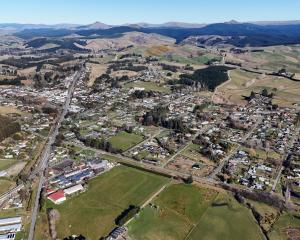
The group of eight came from the Te Wānanga o Raukawa, a Māori university based in Ōtaki. They have spent eight days in Waitaki carving the pou and sharing their skills with locals.
Pou, or pouwhenua, are traditional carved posts representing the people and the land.

There was a a lot of urban migration to Waitaki for work and the marae ensured Māori who moved could still have a place to come.
"It’s really a place for people from all iwi to come and connect with te ao Māori."
Carving tutor Chris Gewetzen said the pou were designed to symbolise that.
One of the main themes of the design was the whale, which were considered a gift to Māori.
As mammals, whales were creatures of the land. They beached because they wanted to return home.
Beached whales provided a great deal of bones and food to the people, so much that they were forced to share.
There was no refrigeration, so the meat had to be given away and eaten quickly.
The pair of pou included a manaaki and a kotahitanga at the top, the male and female respectively, and a whale tooth down the bottom, connecting to the land.
They were made of two macrocarpa slabs, donated by a local farm.
A pou could not be designed until the carver had seen the wood and started removing material, he said.
Sometimes you could have an idea in mind, but after starting to carve the knots and cracks in the wood could force that to change.
The designs also had to have a sense of symmetry.

"At the end of the day the wood calls the shots."
The marae hosted a kowhaiwhai painting workshop last weekend, led by tutor Kelly-Anne Ngatai, who travelled down with the carvers.
Kowhaiwhai are traditional Māori patterns, which the group painted on to boards using stencils.
About 20 people attended and learned the basics of the art, Ms Ngatai said.












